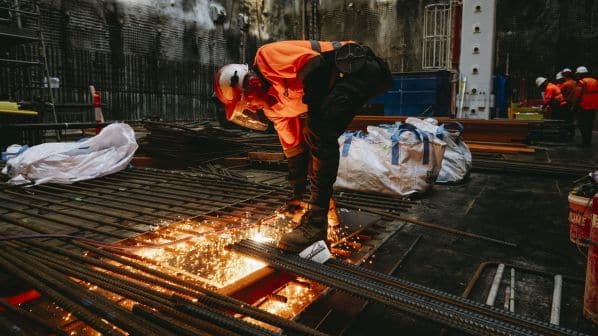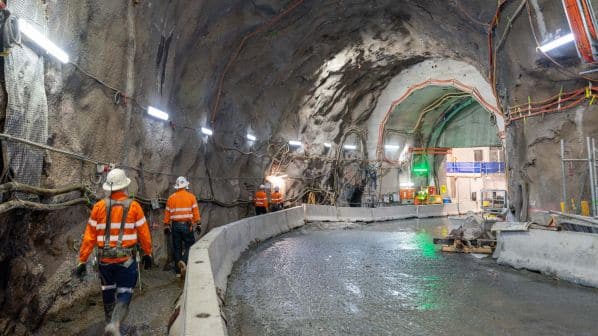AS the only Australian state where the majority of the population lives outside the state capital, Queensland has had a long love affair with railways dating back to 1865 when the first line opened.
State government-owned Queensland Rail operates a 1067mm-gauge system that is 5700km long and serves a population of 5.45 million. The state also has eight major regional networks carrying long-distance passenger services north along the coast as well as to inland destinations. The longest line is the North Coast Line, which stretches 1681km from Brisbane to Rockhampton, Townsville and Cairns. The regional networks also carry more than 11.7 million tonnes of freight a year.
Queensland is one of the world’s largest movers of coal by rail from mine to port. Aurizon, which operates a 2760km network, was formerly part of Queensland Rail, but was privatised in 2010 and is now listed on the Australian Securities Exchange. It is also Australia’s largest rail freight operator.
Major initiatives in Queensland include re-establishment of the rolling stock manufacturing industry within the state to support the Cross River Rail project in Brisbane. Work is also underway on extensions to the Gold Coast light rail network.
Most of these passenger projects are geared towards the Olympic and Paralympic Games, which Brisbane, currently home to 2.5 million and the fastest-growing city in Australia, will host in nine years’ time.
The jewel in the crown is undoubtedly Cross River Rail. The $A 6.3bn project comprises a 10.2km line from Dutton Park to Bowen Hills, and includes 5.9km of twin tunnels under the Brisbane River and Brisbane’s central business district. It is designed to ease bottlenecks as the sole inner-city rail river crossing, the Merivale Bridge, is now approaching capacity.
Tunnelling work for the project started in 2021 with construction planned to be completed by 2025 and the new line operational by early 2026. The project will deliver four new underground stations at Boggo Road, Woolloongabba, Albert Street and Roma Street as well as upgrades to existing stations at Dutton Park and Exhibition.
About 180 workers were involved in tunnel fit-out as of early October, which includes installing emergency walkways, piping and hundreds of kilometres of cabling. All 10km of emergency tunnel walkways are under construction and are progressing at various rates towards completion. The installation of 13km of pipe is nearing completion with the majority of fit-out work expected to be completed in early 2024. This will be followed by an extensive testing and commissioning programme.
The Queensland state government is funding the project without any financial assistance from the Australian federal government, despite several requests for support.
The other big-ticket project, also geared to the Olympic timetable, is the Queensland government’s $A 9.5bn Queensland Train Manufacturing Programme (QTMP). The programme will provide the new Cross River Rail fleet as well as meeting demand for more rail transport in southeast Queensland over the next 10 years.

QTMP, which will be delivered by a partnership of Downer EDI and Hyundai Rotem, will involve the local manufacture of 65 six-car passenger trains and their maintenance. Hyundai Rotem holds an 85.6% share of the joint venture and Downer the remaining 14.4%. The new Queensland-built trains are scheduled for delivery in 2032, in time for the Olympics.
Downer says it is responsible for all aspects of delivering the new EMU fleet, including design, procurement of materials, technology transfer for local production, quality control and warranty repairs as well as the delivery of two driver training simulators. Its share of the project is worth $A 4.6bn.
All 65 of the new trains will be manufactured in Queensland at the Torbanlea facility that Downer is building near Maryborough. Downer is partnering with John Holland to design, build and commission the facility. Preparatory site work is already underway with construction scheduled to start in 2024.
Downer will also build a maintenance and stabling facility on a 66ha site at Ormeau on the Gold Coast where preliminary site work is also underway. Downer and Hyundai will maintain the fleet and the Ormeau rail facility initially under a 15-year contract with options to extend to a maximum of 35 years.
Hyundai will manufacture two prototype trains in Korea to establish the manufacturing process and enable the transfer of technology and knowledge to Queensland where the remaining trains will be built.
The new Torbanlea train manufacturing facility will be able to undertake steel fabrication, robotic welding, bogie construction, bodyshell construction, production of electrical equipment, and the final assembly and testing of completed rolling stock.
Commonwealth Bank of Australia, the largest in the country, is supporting Downer through a $A 276.7m syndicated Green Bank Guarantee facility, the first such standalone facility in Australia.
Downer’s Green Bank Guarantee facility is also the first to be aligned to the 2023 update of the Green Loan Principles from the Asia Pacific Loan Markets Association (APLMA). The new EMUs and associated manufacturing and maintenance facilities that underpin the QTMP project qualify as green under the Clean Transportation criteria of the APLMA’s Green Loan Principles (GLPs), which include electric modes of transport that advance the economy’s transition to a net-zero future.
Gold Coast light rail
Queensland is also forging ahead with expansion of light rail on the Gold Coast south of Brisbane with work now underway on Stage 3 of the project. The $A 1.3bn, 6.5km extension running south to Burleigh Heads will take the line along the Gold Coast Highway, adding eight new stations when it is completed in 2025. Five new LRVs have already been delivered and are set to enter service by the end of this year. Gold Coast Light Rail currently operates a fleet of 18 Flexity 2 LRVs supplied by Bombardier (now Alstom.)
Work is steadily shifting to planning of Stage 4, a 13km extension south of the Stage 3 terminus at Burleigh Heads to Coolangatta via Gold Coast Airport.
Gold Coast Light Rail has proven extremely popular with passengers with more than 73 million trips recorded. Patronage is also 15% higher now than before the Covid-19 pandemic, according to the state government.
The Queensland government, together with the federal government, is also planning a $A 2.6bn upgrade to the main line between Brisbane, Logan and the fast-growing Gold Coast by track-doubling the section between Kutraby and Beenleigh. The project will include station upgrades, removing level crossings and other improvements to address what is becoming an increasingly problematic bottleneck.
The additional track will require a wider alignment as well as easing curves in some locations under the jointly-funded Logan and Gold Coast Faster Rail project. The project is at the expressions of interest stage and has received strong interest from bidders for the three packages of works available.

